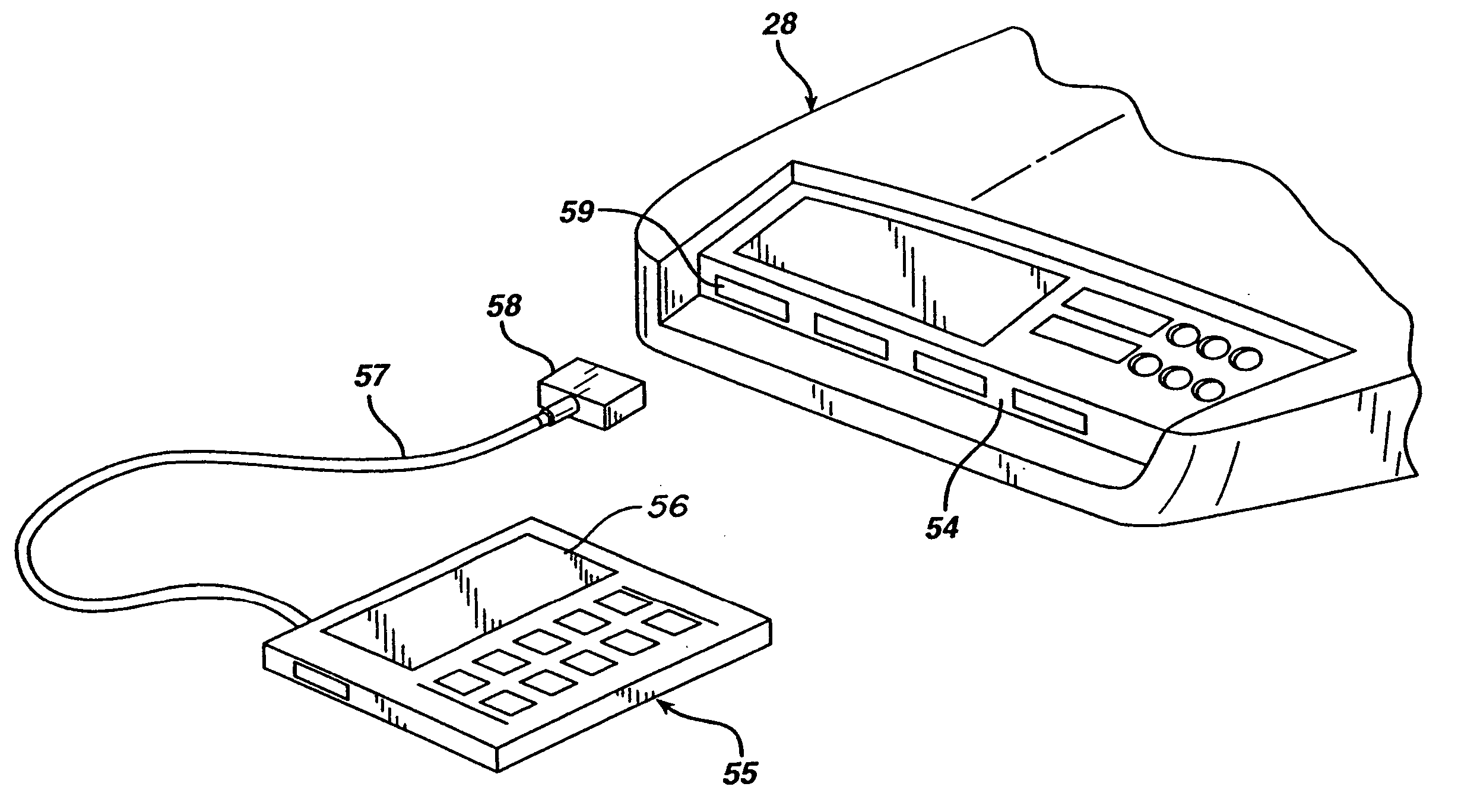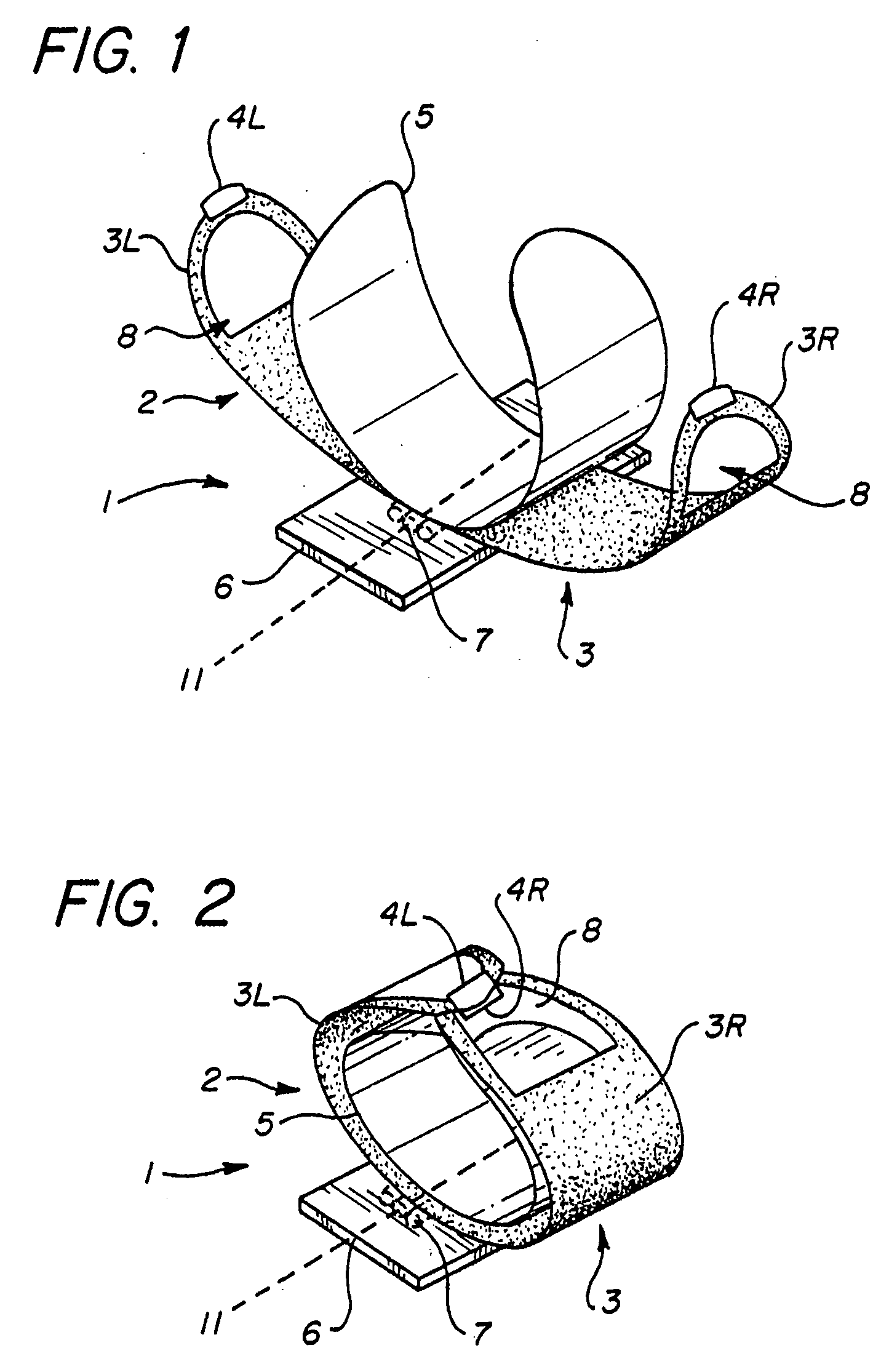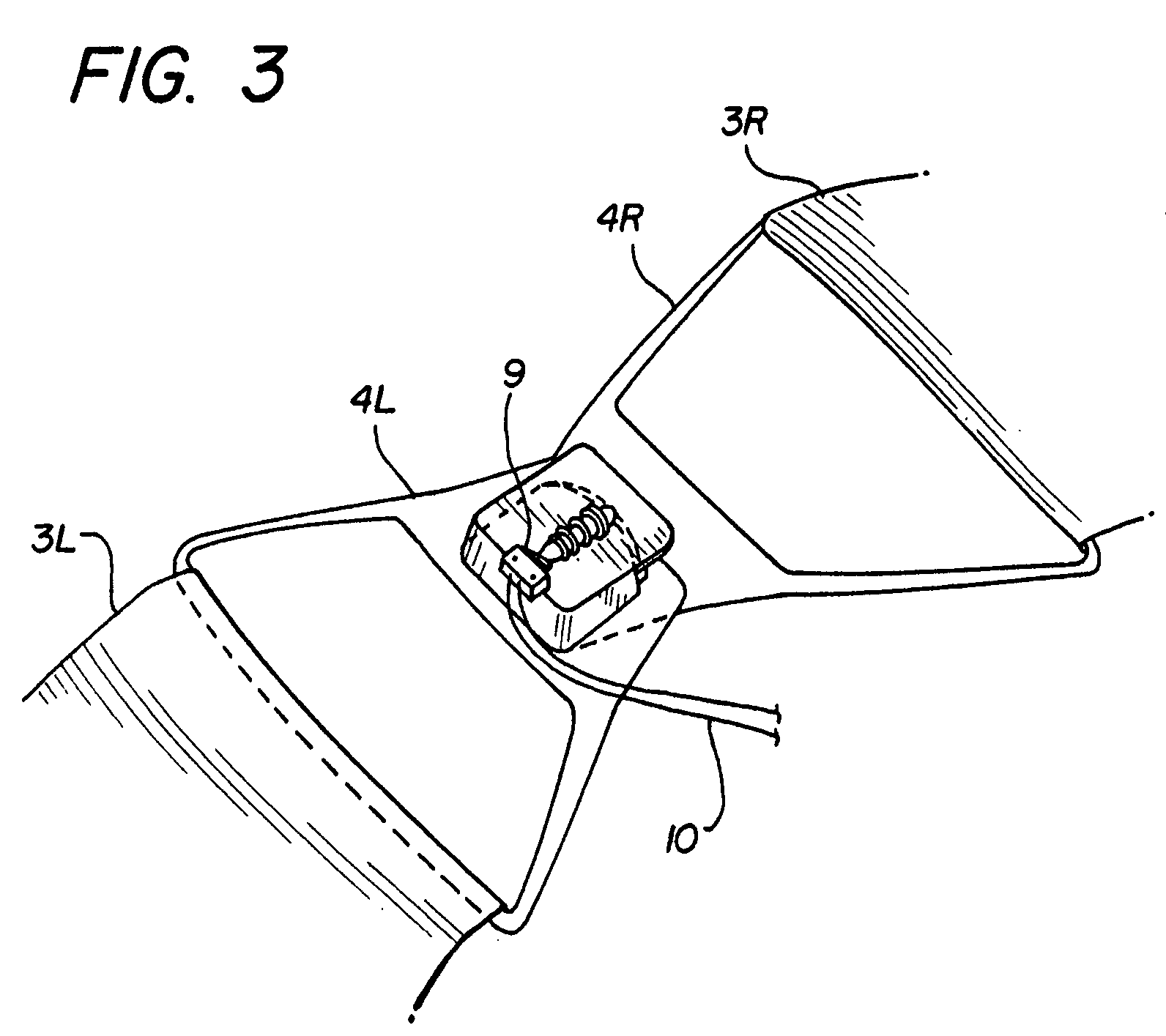Resuscitation device
a technology of resuscitation device and chest compression, which is applied in the direction of artificial respiration, heart stimulation, therapy, etc., can solve the problems of inability to maintain adequate chest compression for more than a few minutes, brain damage of people suffering cardiac arrest, and difficulty if not impossible to maintain adequate heart and rib cage compression
- Summary
- Abstract
- Description
- Claims
- Application Information
AI Technical Summary
Problems solved by technology
Method used
Image
Examples
Embodiment Construction
[0027] FIG. 1 shows a simplified version of the resuscitation device 1. The mechanisms used for compressing the chest includes compression assembly 2 which includes a chest compression belt 3 with buckles 4L and 4R, a friction liner 5, a support board 6 and a motor driven spool assembly 7. The support board 6 is placed under a cardiac arrest victim, and the compression belt 3 and friction liner 5 are wrapped around the victim's chest. The chest compression belt, having a left side 3L and a right side 3R, is buckled over the victims chest by latching the buckles 4L and 4R together. In this configuration, the friction liner 5 will fit between the chest compression belt 3 and the victim and any clothes worn by the victim. The compression belt may be made of any strong material, and sailcloth has proven adequate for use. The compression belt may also be referred to as a vest, corset, girdle, strap or band. The friction liner may be made of Teflon.RTM., Tyvek.TM. or any other low frictio...
PUM
 Login to View More
Login to View More Abstract
Description
Claims
Application Information
 Login to View More
Login to View More - R&D
- Intellectual Property
- Life Sciences
- Materials
- Tech Scout
- Unparalleled Data Quality
- Higher Quality Content
- 60% Fewer Hallucinations
Browse by: Latest US Patents, China's latest patents, Technical Efficacy Thesaurus, Application Domain, Technology Topic, Popular Technical Reports.
© 2025 PatSnap. All rights reserved.Legal|Privacy policy|Modern Slavery Act Transparency Statement|Sitemap|About US| Contact US: help@patsnap.com



